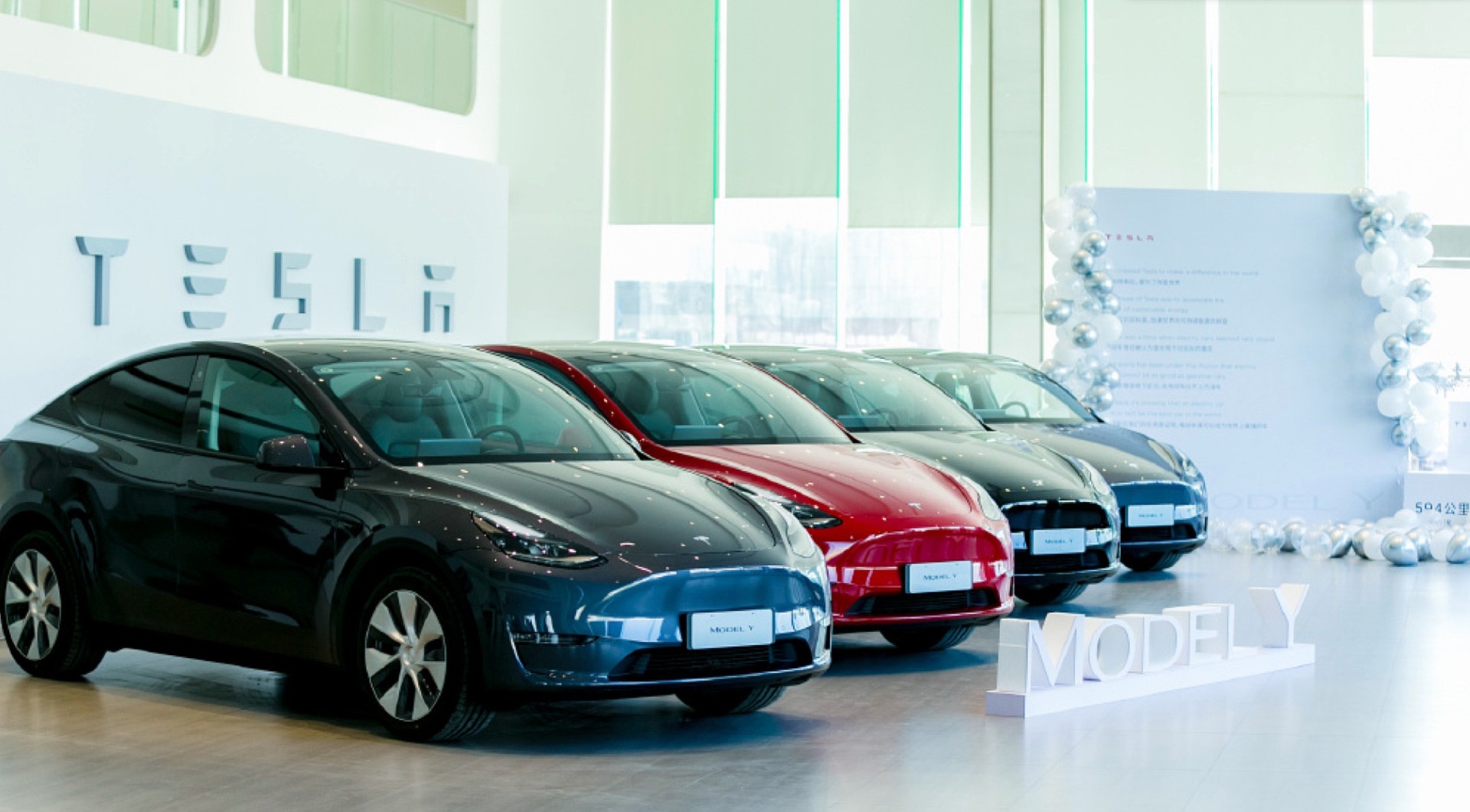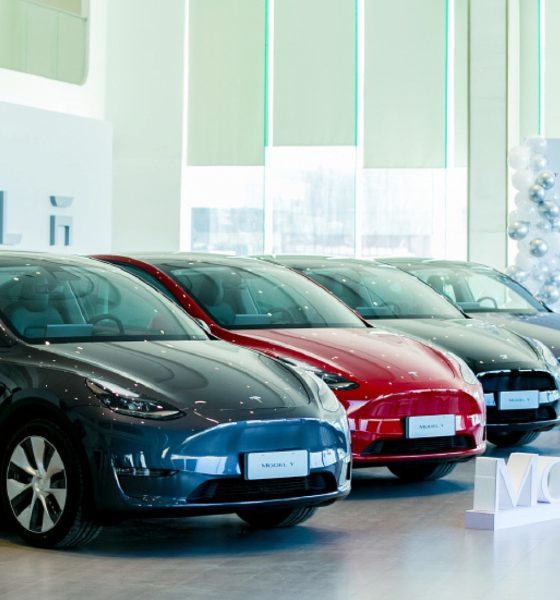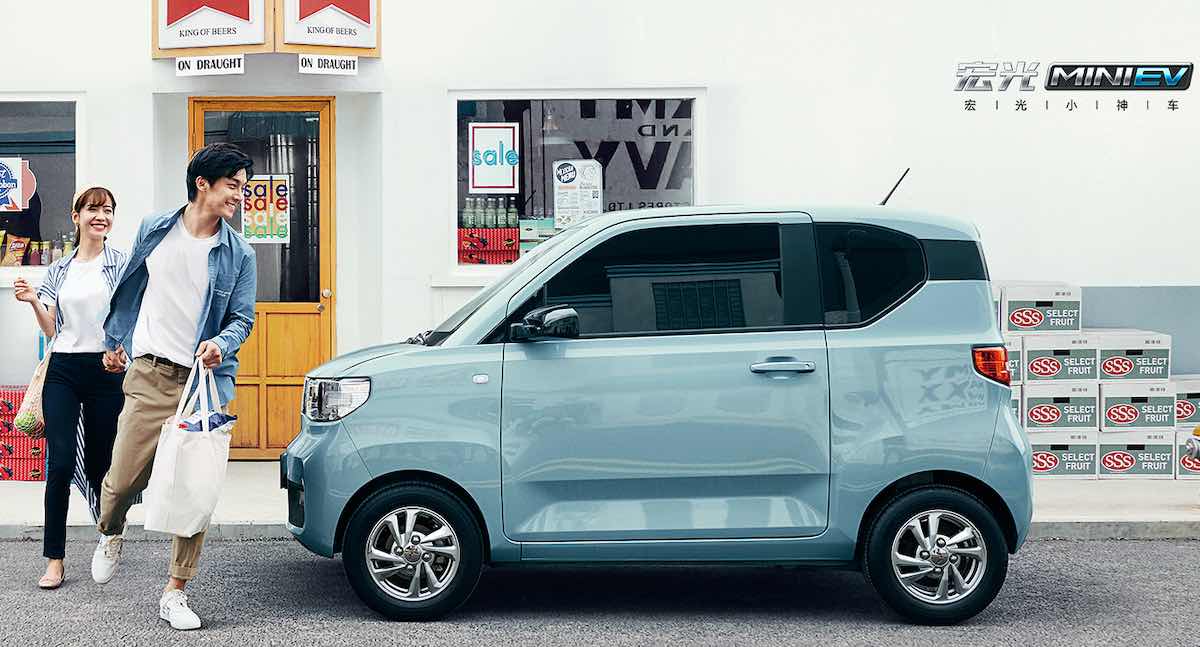

News
Tesla Model 3 and Model Y are making serious waves in China’s most notable EV sector
It is almost strange to see an automotive market open to vehicles of all segments being dominated by premium competitors. Yet this is precisely what seems to be happening in China, with the country’s recent EV sales rankings showing the Tesla Model 3 and the Tesla Model Y becoming two of the country’s best-selling electric cars.
Data aggregated by EVSalesBlog, a website that has been tracking electric vehicles’ sales figures across the globe for years, reveal that the Tesla Model 3 and Model Y are now making some serious waves in China’s electric vehicle sector. The Model 3 actually beat conventional best-sellers in the premium sedan segment, EV or otherwise, with the vehicle outselling the Audi A4, BMW 3-Series, and the Mercedes-Benz C-Class last month.
Tesla’s Model Y ramp in China is building momentum.
The #1 & #2 EVs sold in China last month were the $TSLA Model 3 & Model Y.
I’m excluding 17 horsepower death traps with no airbags and 75 miles of range that sell for ~$5K and take >6 hours to charge.
Source: EVSalesBlog pic.twitter.com/PZYp1Cf9mI
— James Stephenson (@ICannot_Enough) March 18, 2021
The Model Y may be new on the block and its numbers may not be on the level of its sedan sibling yet, but the all-electric crossover is already showing a lot of potential. During its first months of production, the Model Y already outsold some of its local competitors from formidable brands like NIO and Xpeng, companies that also compete in the premium EV segment.
Granted, the Tesla Model 3 and Tesla Model Y are being outsold by the Wuling HongGuang Mini EV, GM’s uber-affordable electric car that’s priced at around $4,400. The Mini EV has led China’s electric car leaderboards for months, and it has outsold the Model 3 to a notable degree. However, a closer look at the Mini EV shows that the vehicle is actually not competing against the Model 3 and Model Y, regardless of what Tesla critics would suggest. This is because GM’s tiny electric car is competing in a far more modest market.
The Mini EV’s affordable price means that it’s a bare-bones vehicle fitted with a battery pack that ranges from 9.2 kWh to 13.8 kWh. It also has a curb weight that’s just above 1,400 lbs, as well as zero airbags. Together with its $4,400 price, the Mini EV’s small size and modest features make it more of a competitor against China’s healthy lineup of 2-3-wheeled vehicles, some of which are sold at the same price range as GM’s modest electric car.

Considering that the Mini EV is more of an inner-city vehicle that’s just a small step up from 2-3-wheeled alternatives, the country’s greater electric vehicle market seems ripe for domination. In this light, Tesla appears to be planting the right seeds with the Model 3 and Model Y, considering that the vehicles already outsell their local competition. What’s particularly exciting is that Tesla has a tendency to lower its vehicles’ prices over time, which suggests that the Model 3 and Model Y may be even more affordable in the future.
China’s EV leaderboards this year may see the $4,400 Wuling HongGuang Mini EV at the top for a while. But when it comes to the segment of serious vehicles that are truly capable of replacing the best internal combustion cars in every metric, the Tesla Model 3 and Tesla Model Y seem poised to take the country’s top spots.
Don’t hesitate to contact us for news tips. Just send a message to tips@teslarati.com to give us a heads up.

News
Tesla starts showing how FSD will change lives in Europe
Local officials tested the system on narrow country roads and were impressed by FSD’s smooth, human-like driving, with some calling the service a game-changer for everyday life in areas that are far from urban centers.

Tesla has launched Europe’s first public shuttle service using Full Self-Driving (Supervised) in the rural Eifelkreis Bitburg-Prüm region of Germany, demonstrating how the technology can restore independence and mobility for people who struggle with limited transport options.
Local officials tested the system on narrow country roads and were impressed by FSD’s smooth, human-like driving, with some calling the service a game-changer for everyday life in areas that are far from urban centers.
Officials see real impact on rural residents
Arzfeld Mayor Johannes Kuhl and District Administrator Andreas Kruppert personally tested the Tesla shuttle service. This allowed them to see just how well FSD navigated winding lanes and rural roads confidently. Kruppert said, “Autonomous driving sounds like science fiction to many, but we simply see here that it works totally well in rural regions too.” Kuhl, for his part, also noted that FSD “feels like a very experienced driver.”
The pilot complements the area’s “Citizen Bus” program, which provides on-demand rides for elderly residents who can no longer drive themselves. Tesla Europe shared a video of a demonstration of the service, highlighting how FSD gives people their freedom back, even in places where public transport is not as prevalent.
What the Ministry for Economic Affairs and Transport says
Rhineland-Palatinate’s Minister Daniela Schmitt supported the project, praising the collaboration that made this “first of its kind in Europe” possible. As per the ministry, the rural rollout for the service shows FSD’s potential beyond major cities, and it delivers tangible benefits like grocery runs, doctor visits, and social connections for isolated residents.
“Reliable and flexible mobility is especially vital in rural areas. With the launch of a shuttle service using self-driving vehicles (FSD supervised) by Tesla in the Eifelkreis Bitburg-Prüm, an innovative pilot project is now getting underway that complements local community bus services. It is the first project of its kind in Europe.
“The result is a real gain for rural mobility: greater accessibility, more flexibility and tangible benefits for everyday life. A strong signal for innovation, cooperation and future-oriented mobility beyond urban centers,” the ministry wrote in a LinkedIn post.
News
Tesla China quietly posts Robotaxi-related job listing
Tesla China is currently seeking a Low Voltage Electrical Engineer to work on circuit board design for the company’s autonomous vehicles.

Tesla has posted a new job listing in Shanghai explicitly tied to its Robotaxi program, fueling speculation that the company is preparing to launch its dedicated autonomous ride-hailing service in China.
As noted in the listing, Tesla China is currently seeking a Low Voltage Electrical Engineer to work on circuit board design for the company’s autonomous vehicles.
Robotaxi-specific role
The listing, which was shared on social media platform X by industry watcher @tslaming, suggested that Tesla China is looking to fill the role urgently. The job listing itself specifically mentions that the person hired for the role will be working on the Low Voltage Hardware team, which would design the circuit boards that would serve as the nervous system of the Robotaxi.
Key tasks for the role, as indicated in the job listing, include collaboration with PCB layout, firmware, mechanical, program management, and validation teams, among other responsibilities. The role is based in Shanghai.
China Robotaxi launch
China represents a massive potential market for robotaxis, with its dense urban centers and supportive policies in select cities. Tesla has limited permission to roll out FSD in the country, though despite this, its vehicles have been hailed as among the best in the market when it comes to autonomous features. So far, at least, it appears that China supports Tesla’s FSD and Robotaxi rollout.
This was hinted at in November, when Tesla brought the Cybercab to the 8th China International Import Expo (CIIE) in Shanghai, marking the first time that the autonomous two-seater was brought to the Asia-Pacific region. The vehicle, despite not having a release date in China, received a significant amount of interest among the event’s attendees.
Elon Musk
Elon Musk and Tesla AI Director share insights after empty driver seat Robotaxi rides
The executives’ unoccupied tests hint at the rapid progress of Tesla’s unsupervised Robotaxi efforts.

Tesla CEO Elon Musk and AI Director Ashok Elluswamy celebrated Christmas Eve by sharing personal experiences with Robotaxi vehicles that had no safety monitor or occupant in the driver’s seat. Musk described the system’s “perfect driving” around Austin, while Elluswamy posted video from the back seat, calling it “an amazing experience.”
The executives’ unoccupied tests hint at the rapid progress of Tesla’s unsupervised Robotaxi efforts.
Elon and Ashok’s firsthand Robotaxi insights
Prior to Musk and the Tesla AI Director’s posts, sightings of unmanned Teslas navigating public roads were widely shared on social media. One such vehicle was spotted in Austin, Texas, which Elon Musk acknowleged by stating that “Testing is underway with no occupants in the car.”
Based on his Christmas Eve post, Musk seemed to have tested an unmanned Tesla himself. “A Tesla with no safety monitor in the car and me sitting in the passenger seat took me all around Austin on Sunday with perfect driving,” Musk wrote in his post.
Elluswamy responded with a 2-minute video showing himself in the rear of an unmanned Tesla. The video featured the vehicle’s empty front seats, as well as its smooth handling through real-world traffic. He captioned his video with the words, “It’s an amazing experience!”
Towards Unsupervised operations
During an xAI Hackathon earlier this month, Elon Musk mentioned that Tesla owed be removing Safety Monitors from its Robotaxis in Austin in just three weeks. “Unsupervised is pretty much solved at this point. So there will be Tesla Robotaxis operating in Austin with no one in them. Not even anyone in the passenger seat in about three weeks,” he said. Musk echoed similar estimates at the 2025 Annual Shareholder Meeting and the Q3 2025 earnings call.
Considering the insights that were posted Musk and Elluswamy, it does appear that Tesla is working hard towards operating its Robotaxis with no safety monitors. This is quite impressive considering that the service was launched just earlier this year.








